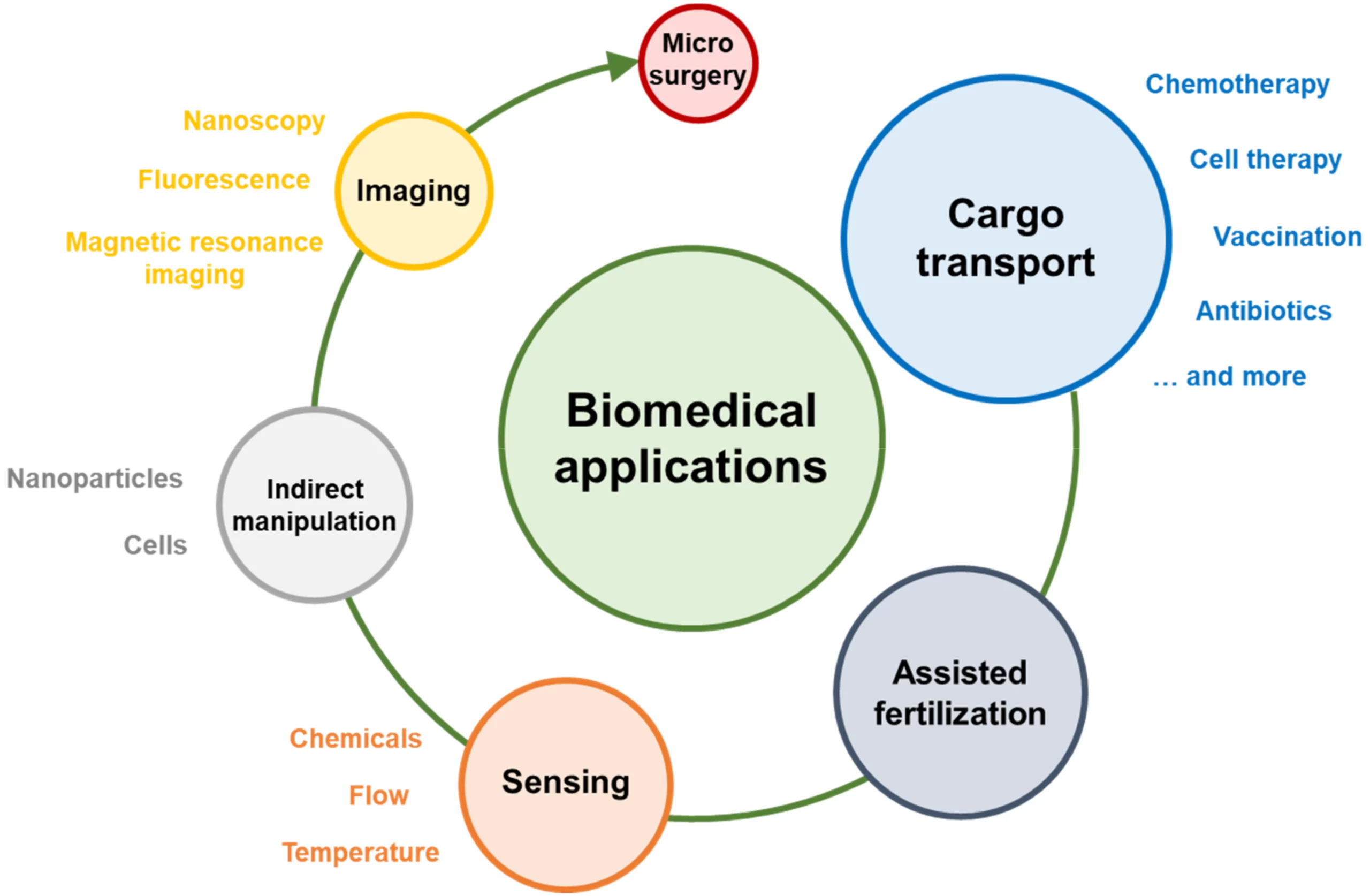Biomedical applications refer to the use of technology and engineering principles to address medical challenges and improve healthcare outcomes. This field encompasses a wide range of technologies, from medical devices to diagnostic tools and therapeutic interventions.
Key Areas of Biomedical Applications
- Medical Devices: These include devices used for diagnosis, treatment, and monitoring of medical conditions. Examples include pacemakers, artificial limbs, imaging equipment, and surgical robots.
- Biomaterials: These are materials that interact with biological systems. They are used in a variety of applications, such as tissue engineering, drug delivery, and medical implants.
- Bioinformatics: This field involves the use of computer science and statistics to analyze biological data, such as DNA sequences and gene expression patterns. Bioinformatics is essential for understanding diseases and developing new treatments.
- Medical Imaging: This technology uses various techniques to visualize the inside of the human body. Examples include X-rays, CT scans, MRI, and ultrasound.
- Telemedicine: This involves the delivery of healthcare services remotely, using technology such as video conferencing and electronic health records.
Benefits of Biomedical Applications
- Improved Diagnosis: Biomedical technologies can help to diagnose diseases earlier and more accurately.
- Enhanced Treatment: These technologies can enable more effective and personalized treatments.
- Reduced Costs: Biomedical applications can help to reduce healthcare costs by improving efficiency and reducing the need for hospitalization.
- Improved Patient Outcomes: By providing better diagnosis, treatment, and monitoring, biomedical applications can lead to improved patient outcomes.
Challenges and Future Trends
- Ethical Considerations: The development and use of biomedical technologies raise ethical questions related to privacy, consent, and the potential for unintended consequences.
- Regulatory Hurdles: Obtaining regulatory approval for new biomedical technologies can be a complex and time-consuming process.
- Cost: The cost of developing and implementing biomedical technologies can be high, limiting access in some cases.
- Advancements in Artificial Intelligence: The integration of artificial intelligence into biomedical applications is expected to lead to significant advancements in areas such as diagnosis, treatment planning, and drug discovery.
- Personalized Medicine: Biomedical technologies are enabling the development of personalized medicine, which tailors treatments to the individual needs of patients.
Biomedical applications are playing a crucial role in revolutionizing healthcare. As technology continues to advance, we can expect to see even more innovative and effective solutions to medical challenges.
